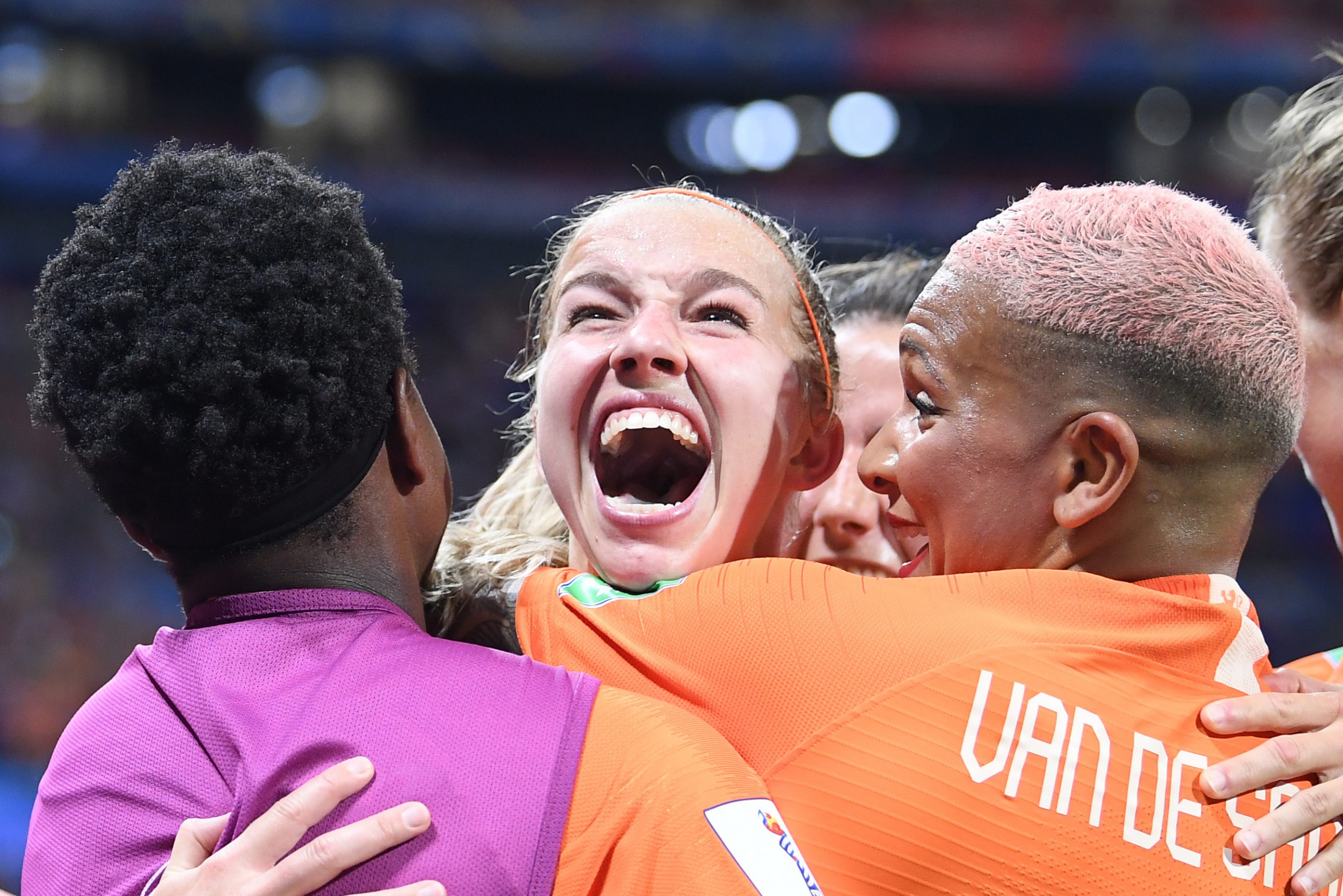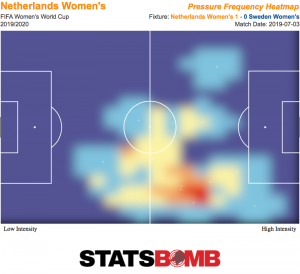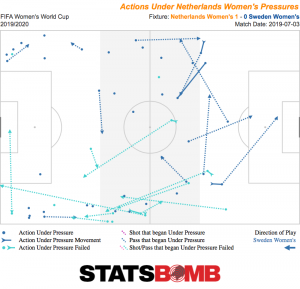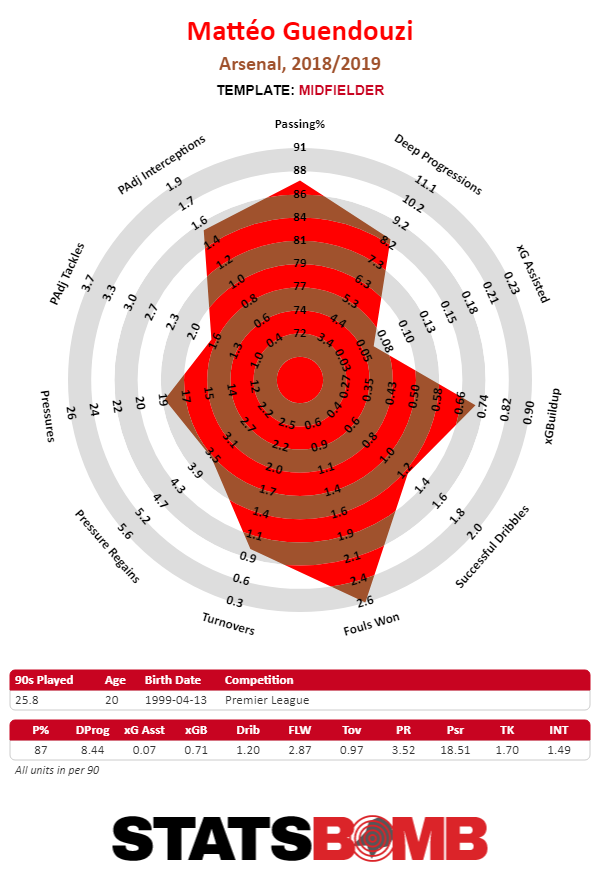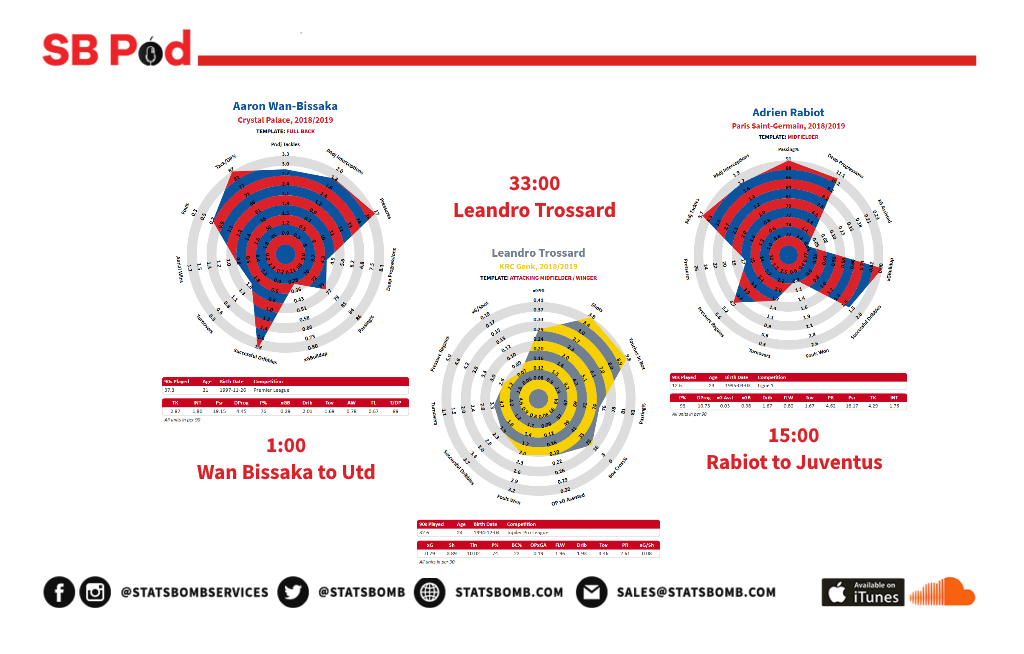Special edition of the StatsBomb podcast as Ted Knutson interviews two key cogs in the LAFC wheel, VP of Soccer Operations and Assistant GM, Will Kuntz and Head Coach, the legendary Bob Bradley. 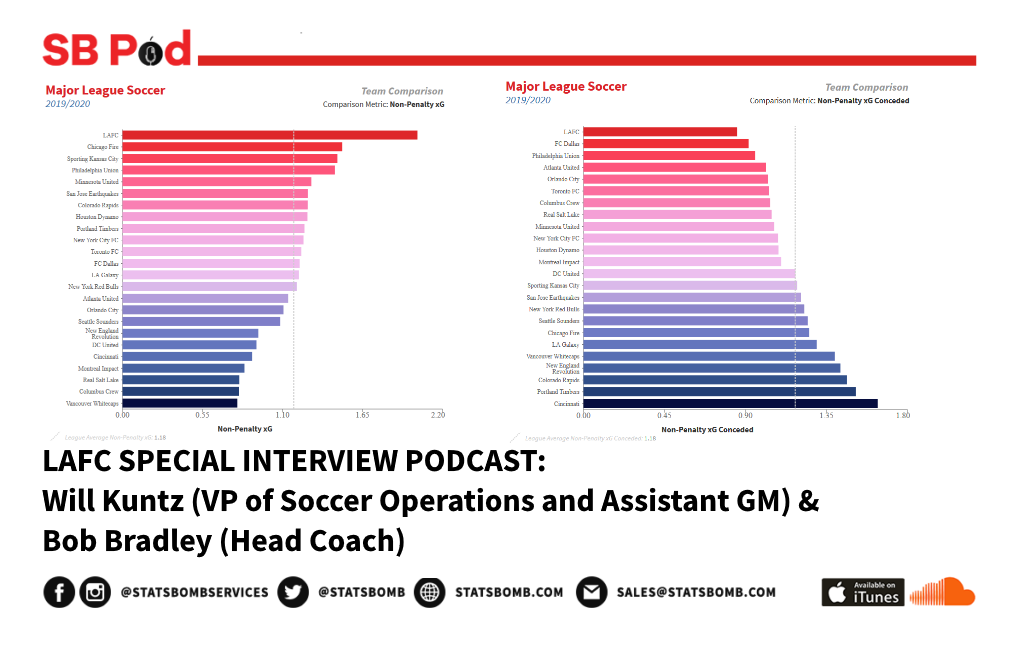
Month: July 2019
How the Netherlands swept aside Sweden to reach the World Cup final
Despite their 2017 European Championship success, a roller coaster qualification campaign saw the Netherlands have to face a tough playoff schedule to even make this year’s big stage.
Many, myself included, felt that the 8th ranked team would be overshadowed by the likes of other European giants France, Germany, England and even Spain based on recent exciting fixtures. But the Dutch have prevailed. A Jackie Groenen extra-time 20-yard goal in the 98th minute have seen the Oranje reach the final in their second appearance at the Women’s World Cup.
Although in almost every statistical measure the Netherlands outplayed the Swedes, a slow first half saw Sari van Veenendaal, one of the Netherlands’ Arsenal contingent, the busiest of the goalkeepers in the opening 45 minutes. Sweden creating two decent chances with the keeper having to be alert for both. On the other hand, an isolated Vivianne Miedema and the Netherlands struggled to get into the 18-yard box and had to settle for weak shots from outside the area.
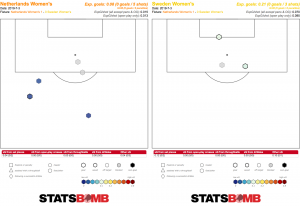
Having escaped Sweden’s early threats, the Netherlands started to settle into their own game plan. Patience and confidence on the ball, completing 74% of 642 passes and a coordinated defensive strategy, were the keys to success. The Dutch also had a wolf-pack mentality, a trend throughout the tournament with the team having the second lowest PPDA only allowing 5.83 passes per defensive action, in addition to having double the pressure regains as Sweden in this semi-final.
The midfield trio of Groenen, Daniëlle van de Donk and Sherida Spitse were dominant defensively, with Spitse willing to put her body on the line and Van de Donk and Groenen tracking back to double down any chance they could. The heat map of defensive actions for the midfield trio compared to the Swedes actions under their pressure show just how effective their defensive pressure was.
Lieke Martens was ineffective in the first half (due to a potential toe injury), with the Dutch getting very little significant output from her on the left. Jill Roord coming on at half time increased the support for Miedema in the second half, and Roord and Van de Donk were both able to occupy the space just underneath Miedema and combine to create more chances. Miedema, not the fastest No.9, is best when she gets the ball at her feet through tight passing combinations in and around the 18 yard box.
The Netherlands' second-half passing network.
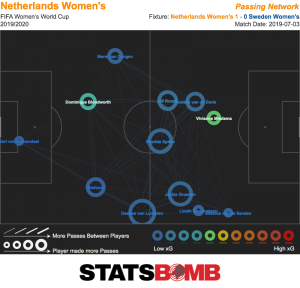
Shanice van de Sanden was the second substitute to come on and replace Lineth Beerensteyn, introducing a formidable player for a tired Magdalena Ericsson to have to defend. Her pace and preference to take a player on one-on-one and get to the byline was evident, although her execution left a lot to be desired. However, the combination of the central support and the increased width that Van de Sanden brought, forcing a gap between the left-back and left-sided centre-back, was key in the game-winning goal. The combination gave Groenen the space to receive the ball unpressured by either Swedish defender and take her shot into the bottom corner.
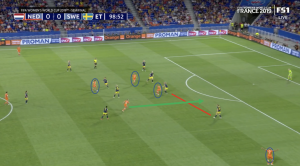
Peter Gerhardsson’s side had some noteworthy tactics in set plays. Sweden were hoping to cause a free-for-all in the six-yard box by crowding this space and making it very difficult for the goalkeeper to cleanly challenge for the ball. It may have been that the Swedes felt at a disadvantage with aerial threats, or perhaps that they felt the Van Veenendaal would make poor decisions under pressure.
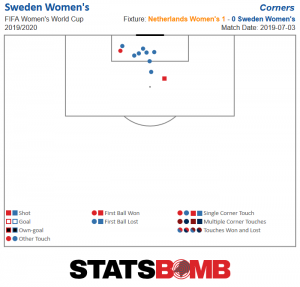
Either way, it was obvious that the intent was to create an environment where they could attack a second ball, and the tactics nearly worked. On more than one occasion, a ball was bouncing along the goal line and it took heroics from the goalkeeper to keep the game tied.
On the Dutch side though, a Miedema header from a corner, in which Sweden were zonal marking, crashed off the crossbar, kept out with the help of Lindahl’s fingertips. Two very different set-piece tactics, yet two of the best chances of the match.
The Netherlands now face a daunting uphill battle. The USA, after having quite the easy draw in the group stages, had an extremely tough European gauntlet to navigate to get to the final. Spain, France and then England all proved testing games for Jill Ellis’ side. The USA are favorites, with the fire power of Alex Morgan and Megan Rapinoe (who have been practicing their celebrations at will) and a goalkeeper in Alyssa Naeher who is coming off the biggest game of her life, with a silent confidence ready to take gold. The defence, on a team level, have only conceded chances worth 0.3 expected goals per game too, an incredibly tight record. Can the Dutch do the unthinkable and extend their title from European champions to world champions? Unlikely, but anything can happen.
After a breakout year, how can Arsenal's Mattéo Guendouzi take his game to the next level
Mattéo Guendouzi made the huge leap from Ligue 2 Lorient to Arsenal this time last year. Brought in under the influence of head scout Sven Mislintat for a fee of £7.2million, it was the type of addition (i.e. young, talented and on the cheap) that Arsenal fans had not seen enough of in recent seasons, with most of their previous signings having been on players who were entering their prime years at best. The absences of Granit Xhaka and the also-newly-arrived Lucas Torreira during a World Cup summer, gave the nineteen-year-old a full pre-season with the first team. This led to him being chosen as a starting midfielder against Manchester City on the opening day of the 2018/19 Premier League season. Over the course of the season Guendouzi showed real promise, especially considering his age, but also demonstrated areas of his game that desperately need improvement.
Control and awareness in possession
Guendouzi’s ability on the ball played a major role in his development at Arsenal. At the beginning of the season, Emery positioned him as one of the two deep midfielders in a 4-2-3-1, where he was constantly tasked with receiving short from the goalkeeper and centre-backs in the buildup phase. It was fairly clear in these opening two matches that there were some parts of this job that he struggled with. Against City, Guendouzi was forced to play on the right side of the double pivot. which took him out of his comfort zone and stopped him from having as great an effect on ball progression. That mostly comes down to his awareness, or lack thereof. Whilst the deep midfielder does scan the area around him, he does it sporadically. Noticeably, he doesn’t do it at all when he’s about to receive a pass, which makes finding the next option all the more difficult. Particularly for a right-footer on the right side of the pitch, he can’t open his body up quite as well as he can on the left to compensate.. That’s one reason why he and Xhaka don’t necessarily make for a great pairing, and why he’s a much more effective option when he can play on the left side of midfield in a partnership with Torreira. When he plays on the left side, the difference is massive. What he, as one of the deep midfielders, was frequently instructed to do was drop to the sides of the centre-backs, thus allowing the full-backs to push on and become greater wide threats. This suited him perfectly. Dropping away from the pressure of the opposition’s block and into a position where his angle sets him up to see everything he needs to see as soon as he receives it, afforded him much more time and space. Even when he was pressured in that position, his shielding of the ball proved to be one of his stronger assets – although it was something he didn’t use enough as a way of evading pressure in the first half of the season, in general. What shouldn’t be missed when discussing his impact in both these positions is his positivity with the ball. He will always find a way to open his body up, so he can have the option to play forward. Whilst the cushion, weaker-foot touch wasn’t as prominent right at the beginning of the season, he was more comfortable using it in every instance by the end of the season. 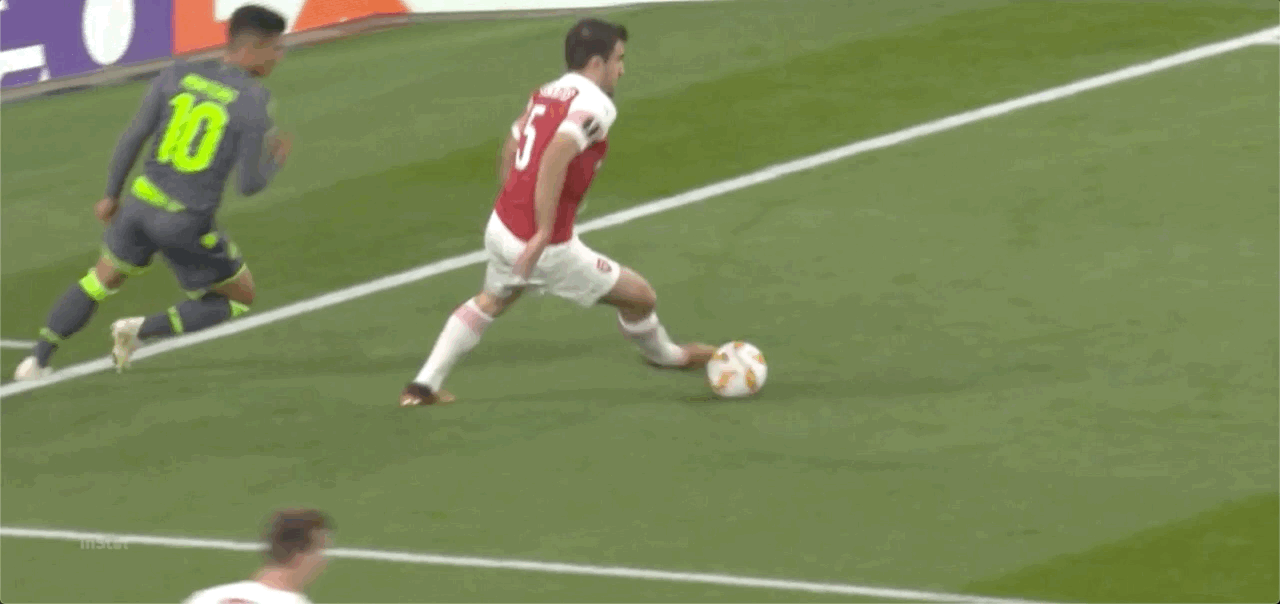 On the right, he would be caught receiving with his back-to-goal rather than on the half-turn, as can be seen in the example above. Add to that his lack of pre-emptive scanning and it made for nightmare scenarios when receiving with his back-to-goal out from the back. Because of this, he could only hope to win fouls, since he had no idea if there was the possibility of a ball around the corner of his opponent to break the press. Another aspect of his game which developed over the course of the season was driving forward with the ball. Similarly to the way he used shielding well but not frequently enough, Guendouzi seemed reluctant to carry the ball further than a few yards. This, however, improved drastically towards the end of the season, to the point where he would openly drive through the centre of the pitch, towards the final third, looking to combine with other attackers. This was indeed helped by the more consistent use of a 3-4-3 system towards the back-end of the season. What also consistently improved throughout the season was his awareness of space when not receiving the ball. The Frenchman can be best described as a high-energy midfielder. When given the freedom, he can be everywhere at once, especially in possession. He will switch the ball to one side and sprint across to support on that far-side. And, what’s most impressive about this is that his vigorous movement is never at the cost of his team. He doesn’t overcrowd spaces by doing this, he usually ends up filling big holes that were previously vacated. His contributions higher up in the 3-4-3, were quite beneficial in providing attacking links and overloads. Ultimately, this raises the question: could he be a dependable number six?The answer to that question depends on his positional discipline. Despite his willingness to move around the pitch, his development as a player might depend on being constrained to the first and second phases of buildup play. Here’s why.
On the right, he would be caught receiving with his back-to-goal rather than on the half-turn, as can be seen in the example above. Add to that his lack of pre-emptive scanning and it made for nightmare scenarios when receiving with his back-to-goal out from the back. Because of this, he could only hope to win fouls, since he had no idea if there was the possibility of a ball around the corner of his opponent to break the press. Another aspect of his game which developed over the course of the season was driving forward with the ball. Similarly to the way he used shielding well but not frequently enough, Guendouzi seemed reluctant to carry the ball further than a few yards. This, however, improved drastically towards the end of the season, to the point where he would openly drive through the centre of the pitch, towards the final third, looking to combine with other attackers. This was indeed helped by the more consistent use of a 3-4-3 system towards the back-end of the season. What also consistently improved throughout the season was his awareness of space when not receiving the ball. The Frenchman can be best described as a high-energy midfielder. When given the freedom, he can be everywhere at once, especially in possession. He will switch the ball to one side and sprint across to support on that far-side. And, what’s most impressive about this is that his vigorous movement is never at the cost of his team. He doesn’t overcrowd spaces by doing this, he usually ends up filling big holes that were previously vacated. His contributions higher up in the 3-4-3, were quite beneficial in providing attacking links and overloads. Ultimately, this raises the question: could he be a dependable number six?The answer to that question depends on his positional discipline. Despite his willingness to move around the pitch, his development as a player might depend on being constrained to the first and second phases of buildup play. Here’s why.
Speed, vision, range and execution
What has most impressed me about Guendouzi is not only his spectacular passing range but also all that comes with it. What he lacks in pre-emptive awareness he makes up for in his operation speed (i.e. how quickly he can recognise a situation and act on it). Even though his receiving techniques don’t afford him too much time, his speed of thought once he’s turned and got his head up is outstandingly quick. All he needs is a split second and to identify a line-splitting pass or a run to play in over the top. Both of these types of passes he is a specialist at playing. It was hard to keep count of just how many times this season he delivered a perfectly-placed, drilled ball through the midfield to one of the attackers between the lines. These kinds of passes saw him form a brief-but-pleasing partnership with Mesut Özil. And, even the passing example below didn’t quite come off for him, it also depicts the ambitiousness in his range and the risks he’s more than willing to take. 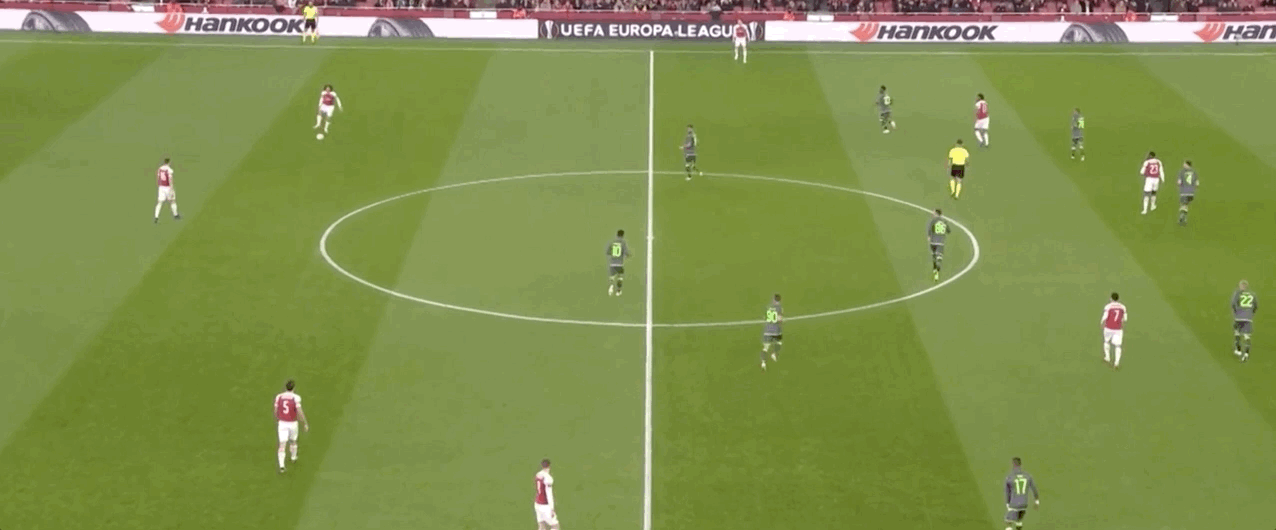 What is also hugely important in pulling off this type of pass is ensuring it’s not predictable. Thankfully, the speed at which he releases the ball gives opposition defenders little time to read the pass and shift. Equally, he has frequently used pauses on the ball and big open stances, as if he was about to ship it long, in order to disguise his next action. His longer, aerial passes are also always so perfectly placed – landing on his teammate’s feet almost without fail. His technique tends to involve the slightest bit of backspin that allows him to exploit even the smallest of gaps behind the last line.
What is also hugely important in pulling off this type of pass is ensuring it’s not predictable. Thankfully, the speed at which he releases the ball gives opposition defenders little time to read the pass and shift. Equally, he has frequently used pauses on the ball and big open stances, as if he was about to ship it long, in order to disguise his next action. His longer, aerial passes are also always so perfectly placed – landing on his teammate’s feet almost without fail. His technique tends to involve the slightest bit of backspin that allows him to exploit even the smallest of gaps behind the last line. 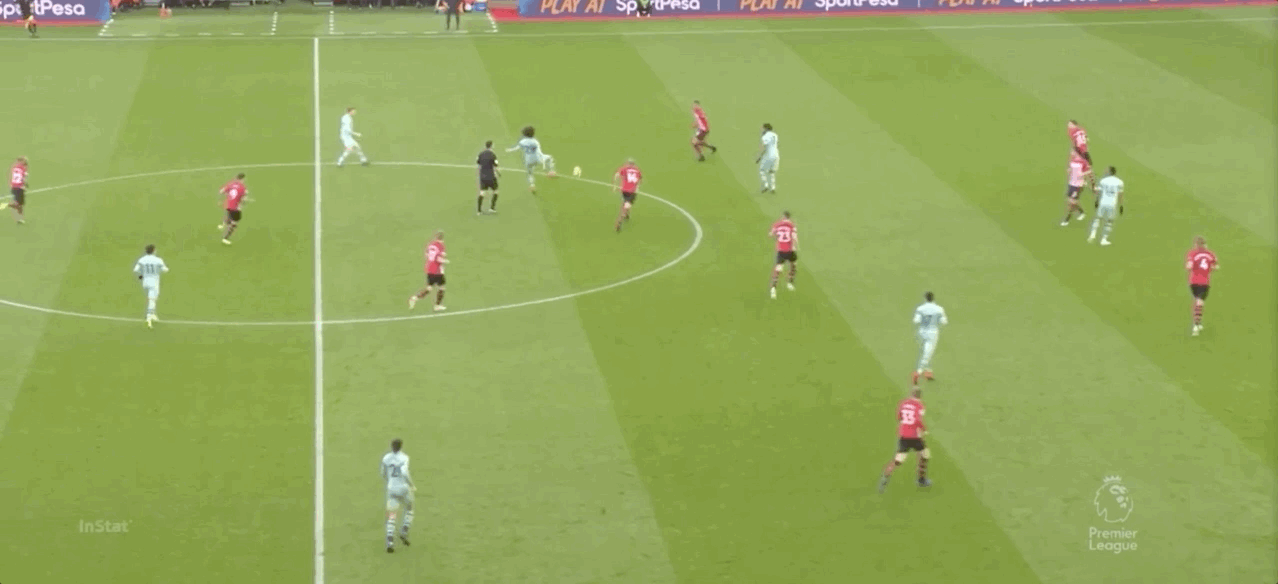 Of course, with such a broad range, there is usually a big drawback, like decision-making – something his teammate, Xhaka, suffers from. But that seems far from the case. Only on rare occasions, where his lack of pre-emptive scanning has stopped him from assessing both sides properly, has he taken up the wrong option. His intelligence in knowing which pass to play is another big plus point. The numbers support this as well. Only Xhaka and Ozil progressed the ball more frequently from deep positions than Guendouzi did.
Of course, with such a broad range, there is usually a big drawback, like decision-making – something his teammate, Xhaka, suffers from. But that seems far from the case. Only on rare occasions, where his lack of pre-emptive scanning has stopped him from assessing both sides properly, has he taken up the wrong option. His intelligence in knowing which pass to play is another big plus point. The numbers support this as well. Only Xhaka and Ozil progressed the ball more frequently from deep positions than Guendouzi did. 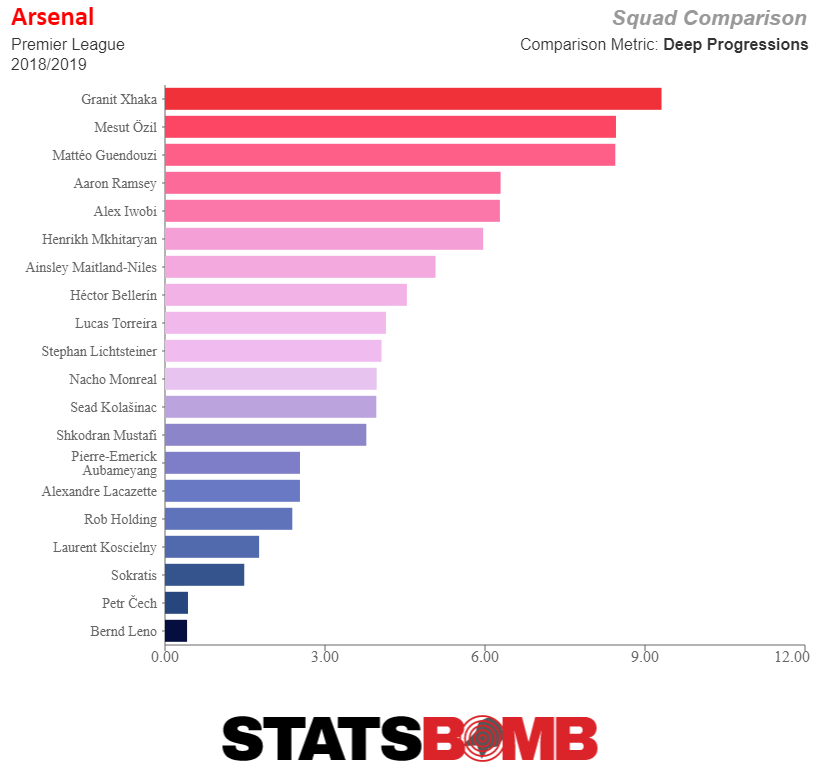 And as for pass selection, while Xhaka is a long ball distribution machine, completing almost twice as many as Guendouzi, 8.40 to 4.38 per 90 minutes, it’s Guendouzi who is the more efficient of the two. His completion rate on long balls last season was 73% while Xhaka’s was 61%. Anytime Xhaka had time and space he’d opt to hit it long, delivering 12.23 unpressured longball attempts per match, while Guendouzi only selected to play it long 5.38 times while not under pressure. Those numbers might be influenced by their tactical roles, but even so it’s clear that Guendouzi’s inclination is to play incisive balls upfield when the opportunity is there while Xhaka is more aggressively trying to create opportunities even when they are less apparent.
And as for pass selection, while Xhaka is a long ball distribution machine, completing almost twice as many as Guendouzi, 8.40 to 4.38 per 90 minutes, it’s Guendouzi who is the more efficient of the two. His completion rate on long balls last season was 73% while Xhaka’s was 61%. Anytime Xhaka had time and space he’d opt to hit it long, delivering 12.23 unpressured longball attempts per match, while Guendouzi only selected to play it long 5.38 times while not under pressure. Those numbers might be influenced by their tactical roles, but even so it’s clear that Guendouzi’s inclination is to play incisive balls upfield when the opportunity is there while Xhaka is more aggressively trying to create opportunities even when they are less apparent.
Defensive awareness, tackling and jockeying
Unfortunately, defending is probably the pitfall of Guendouzi. The infrequency at which he scans the pitch, and his subsequent awareness, is at its worst during defensive phases. His non-existent scanning leads to all sorts of trouble when defending in any capacity. Instead of being aware of his surroundings, he is overly aware of where the ball is and only the opponents he can easily spot in his periphery. As a result, he – throughout the whole of the season, not just at the start – was guilty of blocking one way into an obvious option whilst leaving the forward space completely open. This was particularly the case when an attacker was dribbling in from the flanks. 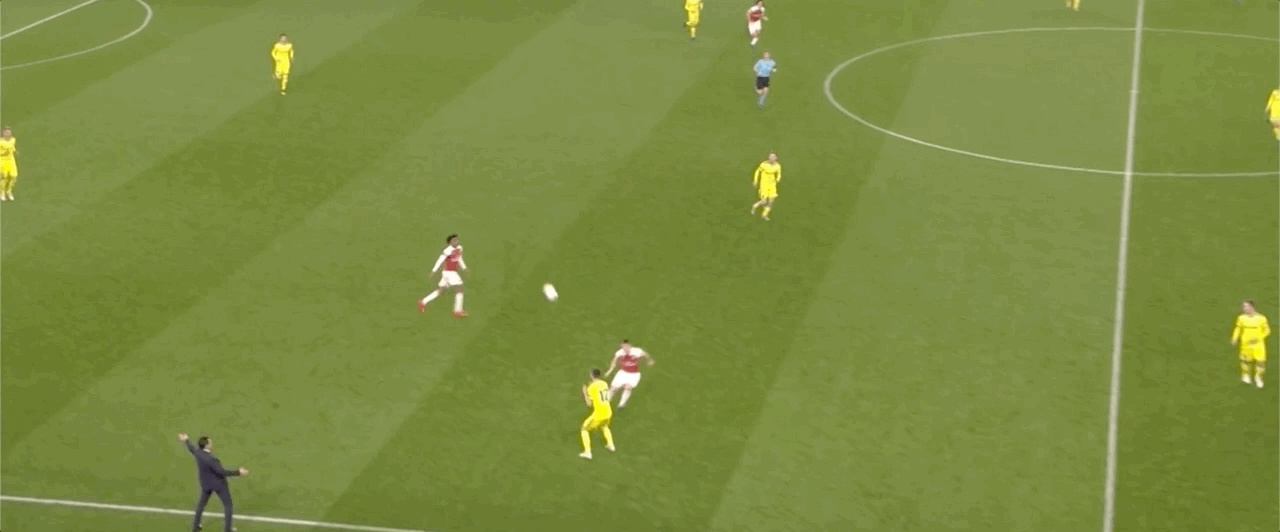 In addition to this, there was also the problem of his jockeying stance. Most often exposed when pressing high up the pitch in pursuit of the ball, Guendouzi would be far too heavy-footed, making it difficult for him to adjust when a ball passed him by. To make matters worse was that fact that he didn’t know when to step off in pursuit of the ball. In the same cases where he was vulnerable to dribbles inside, he was also susceptible to passes into players he was supposed to be closing down. In these situations, he rushed to get in front to intercept but, realistically, was never going to make it there in time, which just allowed his opponent to let the ball come across him before pushing it on past him.
In addition to this, there was also the problem of his jockeying stance. Most often exposed when pressing high up the pitch in pursuit of the ball, Guendouzi would be far too heavy-footed, making it difficult for him to adjust when a ball passed him by. To make matters worse was that fact that he didn’t know when to step off in pursuit of the ball. In the same cases where he was vulnerable to dribbles inside, he was also susceptible to passes into players he was supposed to be closing down. In these situations, he rushed to get in front to intercept but, realistically, was never going to make it there in time, which just allowed his opponent to let the ball come across him before pushing it on past him. 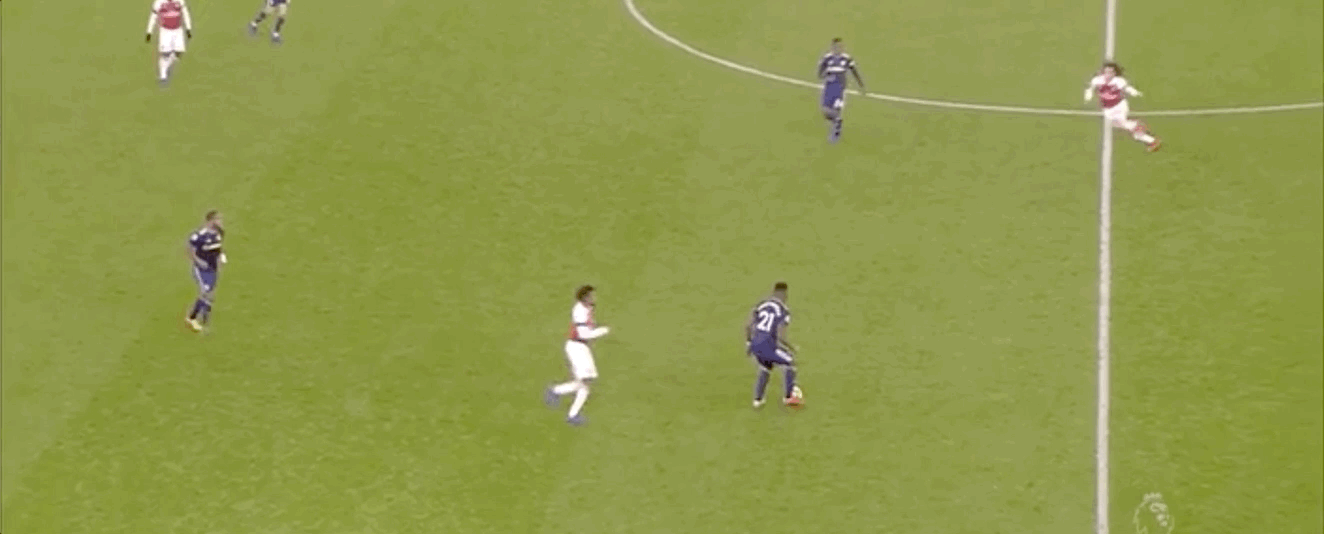 When he is beaten, he’s often very slow to recover, as well. He doesn’t bust a gut to get back to the box, nor is he ever prepared for the possibility of give-and-go exchanges. In front of the box is also another place where his jockey stance can be easily exposed. He doesn’t keep low enough to the ground, but will instead form a rigid-like statue of a stance, which prevents him from dealing with attackers’ turns back against the grain of his press, as could be seen in the very first goal Arsenal conceded this season. He is also easily manipulable when defending zonally, as he doesn’t spot movements behind him, so can be easily drawn out of position by short exchanges between players in front of and behind him as he looks to chase down the ball. On top of this, he rarely seems prepared to hunt the ball back towards his own goal. He never sets himself in a way that allows him to keep up with give-and-go exchanges which he is sometimes a victim to. Just about the only redeemable aspect of his defending is his tackling. Guendouzi’s tackling approach involves nipping away at opposition players, using his long legs to do so, whilst he uses his body strength to help separate the ball from the man. This saw him run up an average of 1.7 possession adjusted tackles per ninety minutes, which is not too bad,, but still less than the rest of Arsenal’s midfielders. Xhaka, Torreira and Ramsey had 2.84, 2.56 and 2.33 respectively.
When he is beaten, he’s often very slow to recover, as well. He doesn’t bust a gut to get back to the box, nor is he ever prepared for the possibility of give-and-go exchanges. In front of the box is also another place where his jockey stance can be easily exposed. He doesn’t keep low enough to the ground, but will instead form a rigid-like statue of a stance, which prevents him from dealing with attackers’ turns back against the grain of his press, as could be seen in the very first goal Arsenal conceded this season. He is also easily manipulable when defending zonally, as he doesn’t spot movements behind him, so can be easily drawn out of position by short exchanges between players in front of and behind him as he looks to chase down the ball. On top of this, he rarely seems prepared to hunt the ball back towards his own goal. He never sets himself in a way that allows him to keep up with give-and-go exchanges which he is sometimes a victim to. Just about the only redeemable aspect of his defending is his tackling. Guendouzi’s tackling approach involves nipping away at opposition players, using his long legs to do so, whilst he uses his body strength to help separate the ball from the man. This saw him run up an average of 1.7 possession adjusted tackles per ninety minutes, which is not too bad,, but still less than the rest of Arsenal’s midfielders. Xhaka, Torreira and Ramsey had 2.84, 2.56 and 2.33 respectively.
What’s next?
Guendouzi still has a long way to go if he wants to become the complete package. However, even as a very-much-unpolished product, he is still worth gambling on and given his age it’s reasonable to expect even more from him next season. His stats so far suggest he can become the focal point of progression from the deepest phases. If Emery wants to get the best out of him, though, it seems like the quickest way to do so is to continue playing him off the left of a double pivot in a 4-2-3-1 next to Torreira, with the Uruguayan midfielder acting as the necessary balancer for all of Guendouzi’s defensive issues.
Tanguy NDombele marks a step forward for Tottenham Hotspur, their first superstar purchase
Tanguy NDombele is officially a member of Tottenham Hotspur. It’s a momentous moment for the North London club. The acquisition marks a change in not only the club’s approach, but their stature in European football. For the first time Spurs have successfully purchased a top line young star, one whose acquisition would not be out of place at any of the top clubs in the world.
Spurs have had superstars before of course. They developed Gareth Bale. They set (or at least tied) a club record to purchase Luka Modrić from Dinamo Zagreb. More recently they’ve developed Harry Kane, and won the transfer lottery with Dele Alli. Both Christian Eriksen and Son Heung-min are talented players bought for reasonable prices who have blossomed along with Spurs.
NDombele, however, is something different. Spurs successes, up until now, have been achieved by doing the things that a team has to do when the biggest players in the world are unavailable to them. Whether it’s developing their own talent, or successfully taking risks on players that other teams decide not to, Spurs, by shrewd management, or dumb luck managed to build a team of stars that other top clubs decided they didn’t want. Now, for the first time, they’ve acquired the kind of young midfield star that every team in the world targets.
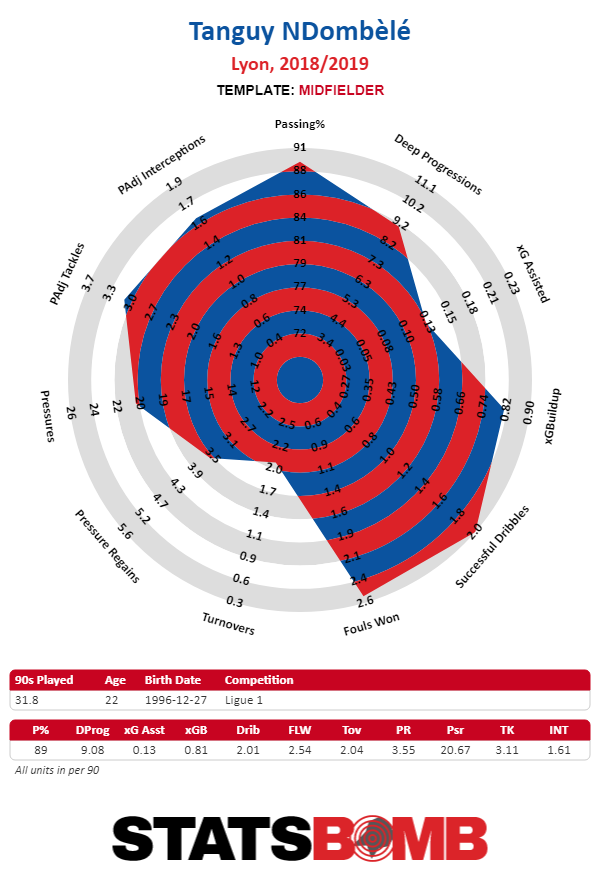
NDombele is the kind of midfielder who can do everything. He’s equally adept at patrolling the midfield defensively and bringing the ball forward in attack. Lyon’s success hinged on NDombele doing both. NDombele led the team with 9.08 deep progressions per 90 minutes.
Drawing up a game-plan for the World Cup semi-finals
Twenty-four teams travelled to France for this World Cup and now only four remain. It's been a wild ride to get here and, from the looks of it, the semi-finals won't reign in the wild-ness.
The teams will, undoubtedly, have carried out thorough planning as to how to play against their next opponents, so let's join them and delve into the data to get a sense for how the semi-finalists could play to give them the best chance of getting to the final.
England vs United States
England and the United States will give each other no quarter. The feistiness has started pre-match, with sections of the English press calling the American team arrogant and Phil Neville questioning the etiquette of the USWNT operations personnel taking a look at the hotel England happened to be staying at, should the US want to stay there in the days before the final.
The spice that those add will mostly be off-field, in the newspapers and commentary booths, but on-field these are two of the most intense counterpressing teams when they lose the ball. Both are in the top five for the rate at which they chase down turnovers they lose. Tuesday's match could be frenetic.
There is are nuanced differences in the way each team does this, though. The Lionesses hunt in packs; Neville's team are second in the World Cup for highest percent of their counterpresses that feature more than one player doing the pressing (29.2%). The English press might think the United States overly bombastic but, in only counterpressing with multiple players 16.9% of the time, they look relatively tame in comparison.
Ellen White leads the line for England, in and out of possession. As one of the joint-top scorers in the competition it's no surprise that she's caught the eye, but her defensive workrate is equally off the charts. With 16.75, she has the most pressures in the final third per appearance, giving opposing defenders absolutely no rest. Four-game radar charts usually aren't advised, but White's earned an exception:
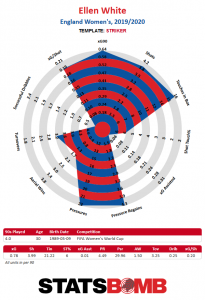
Meanwhile, adding to the narrative around the match is the fact that Megan Rapinoe is the key cog in the American side. She's the player that the USWNT have targeted most with their passes during the two knock-out matches, with 111. England won't be heartened by this, but the next names on the list also give a sense of how attacking the US have been.
Rapinoe is followed by striker Alex Morgan (89), then midfielder Sam Mewis (86), and only then do you get a defender, Abby Dahlkemper with 68 passes aimed at her.
England, possibly a symptom of having played Cameroon in the round of 16, read very differently. Their top five pass-receivers reads Lucy Bronze (right-back), Millie Bright (centre-back), Keira Walsh (defensive midfielder), Nikita Parris (an attacker!), and Steph Houghton (another centre-back).
With this influence of the back-line in build-up play, it's worrying for England that they're prone to playing the ball to Walsh, the anchor of midfield, under pressure this tournament.
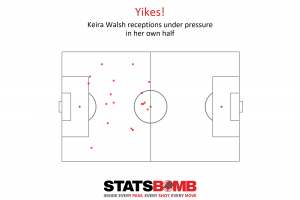
This came to a head against Cameroon (below, red), where many of Walsh's most vulnerable moments occurred.
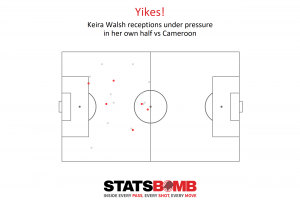
As if all of this wasn't enough to be getting on with, the prospect of Megan Rapinoe and Lucy Bronze going head-to-head on the United States' left/England's right is one to be excited about. It'll be game theory in action - is it best to nullify the other's attacking threat by prioritising defending, or by going on the attack oneself?
For England, the next-biggest problem to solve will be how to build from the back. The United States are more than capable of taking advantage of the Lionesses' shaky moments at the back, but England will be wary of playing long and possibly giving their opponents the ball. Phil Neville, one would assume, will have faith in his own players to survive the pressure of American pressing. But will they?
At the other end of the pitch, if England decide to utilise Ellen White as a non-stop presser then this could be a very odd game, pressing and counter-pressing, the midfield an area where second balls are won more than where passes are made.
It could be hectic. Hold onto your hats.
Netherlands vs Sweden
While the focus will be on the other semi-final, this one could be equally interesting.
Neither team is perfect by any means. Taking penalties out of the equation, the Netherlands only got 0.41 more expected goals in the knock-out rounds than their two opponents, and for Sweden that figure is 0.45. When you're not even half an expected goal better than your opponents over two knock-out games, your place in the semi-final was far from a certainty.
Netherlands are even more of a collection of counterpressing swarmers than England. 31% of their counterpressing ventures include more than one player.
Sweden, though, aren't a team to dwell on the ball much. Out of the eight quarter-finalists, they strung together five or more passes in the same sequence of play the second-lowest amount (28 across the two games). Only Italy made fewer.
This could mean that Sweden will be easier pickings for the Netherlands' press, but it could also mean that the Swedes will just bypass the pressure by going long to their attackers, in particular centre-forward Stina Blackstenius.
[dots represent Blackstenius' position; black = complete, red = incomplete]
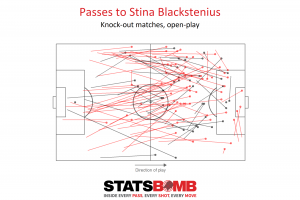
Compare that with the passes that have been aimed in the direction of Netherlands striker Vivianne Miedema. There's still an aspect of direct play, but also a relative abundance of potential receptions around the D or inside the box.
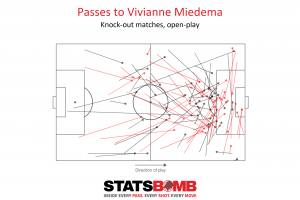
Although the Dutch attack has undeniable quality, they have struggled - particularly in their quarter-final against Italy - to work good shooting opportunities. The average expected goals value of their shots has been just 0.081 in the knock-outs (i.e., an 8% chance), only the sixth-best of the eight teams to make the quarter-finals. Across the tournament as a whole, they've averaged 10.6 completed passes in the final third for every shot they take, the highest of any of the 24 teams.
The two styles - punt it to Blackstenius vs circulate in the final third - will be an interesting clash. The Netherlands, partly as European champions and partly as the team with the greater talent base, will be the favourites. Being the underdogs suited Sweden against Germany, but if the Dutch can get their defensive line in order then they might be able to deal with the direct threat fairly well.
Sweden may choose to direct their long balls on their right, which is where Sofia Jakobsson, scorer against Germany, plays. Out of the two Dutch central defenders, it's left-sided Dominique Bloodworth who looks more vulnerable in the air. Partner Stefanie van der Gragt has averaged 2.83 successful aerial duels per 90 minutes this tournament at a 69% success rate; Bloodworth's averaged 0.74 per 90 with a marginally lower success rate of 67%.
This match will have a different type of ebb and flow to the other semi-final, but which way it ebbs is still uncertain.
StatsBomb Transfers Podcast: July 2019 #1
ANNOUNCING StatsBomb Innovation in Football Conference 2019
StatsBomb's first ever conference will be held at Stamford Bridge stadium, on Friday October 11, 2019. The conference will be a mesh of speakers, panels, and research papers in football/soccer with potentially some cross-sport guests invited. Oh, and you fine ladies and gentlemen are all invited. Tickets will go on public sale in the next couple of weeks and will cost £225 + VAT. It's not a huge venue - attendance will top out at 350 people. There will also be a limited pack of half-price tickets made available for students. We're still locking down speaker engagements, but things that are definitely happening include:
- A research paper competition
- Multiple panels with high profile guests from around the industry
- Our first ever LIVE StatsBomb podcast
And in typical StatsBomb style, we will go out of our way to make sure it's great. Expect more details throughout the summer as they come available. StatsBomb Courses We will be teaching another Introductory and another Set Pieces course in London on the Wednesday and Thursday leading up to the event. Tickets for those will go on sale at the same time as the conference, and we will offer a significant discount to people who want to attend all three days. Feedback on these has been exceptional, and our London courses had attendees from all levels of football and fanalysts alike. Chelsea Fans On Saturday, I tossed a teaser for the conference with some beta art out on my personal Twitter account.
— Ted Knutson (@mixedknuts) June 29, 2019
This took off in a way I didn't quite anticipate - Chelsea fans were really excited that we might be working with the men's team in recruitment, opposition analysis, set pieces, and all the stuff we do via our consulting arm. Social media these days is not typically a home to huge volumes of positivity, but Chelsea fans seemed to think the combination of Petr Cech, Lampard, and StatsBomb would be a really good thing for the club. Unfortunately, as noted above, the teaser was about the conference taking place at Stamford Bridge and not about any potential partnership or acquisition by the club of our company. But I did want to say a genuine thanks from everyone here at StatsBomb for the vote of confidence. Football is changing very rapidly, and StatsBomb is a big beneficiary (and almost certainly a driver) of that change. Our data and analysis business stands on its own, and wants to serve as many customers as possible. However, I've been public on our podcast that the ideal situation for the consulting side of our business would be to sign an exclusivity agreement with a single club across multiple years, to help out with all of the things we do best, and to help that club find new edges to exploit now and in the future. The list of topics we think can help football teams perform better but have yet to explore is long. We haven't had the analytics budget of a team like Liverpool, but our public research has typically dovetailed with their actual moves, and we are on the cutting edge of a number of other improvements in football, some of which we've made available to course attendees. Anyway, the fact that a broad spectrum of fans were genuinely excited at the idea of adding a competent stats and data group to one of the biggest clubs in the world is another sign that the game is changing. Unfortunately we do not currently have an agreement with the men's side of the football club. I can't offer further details on it yet, but we have made an offer and would be proud to support the Chelsea Women's team with free Data and StatsBomb IQ though, so between that and a kickass analytics conference at Stamford Bridge, we'll be around. --Ted Knutson ted@statsbomb.com
